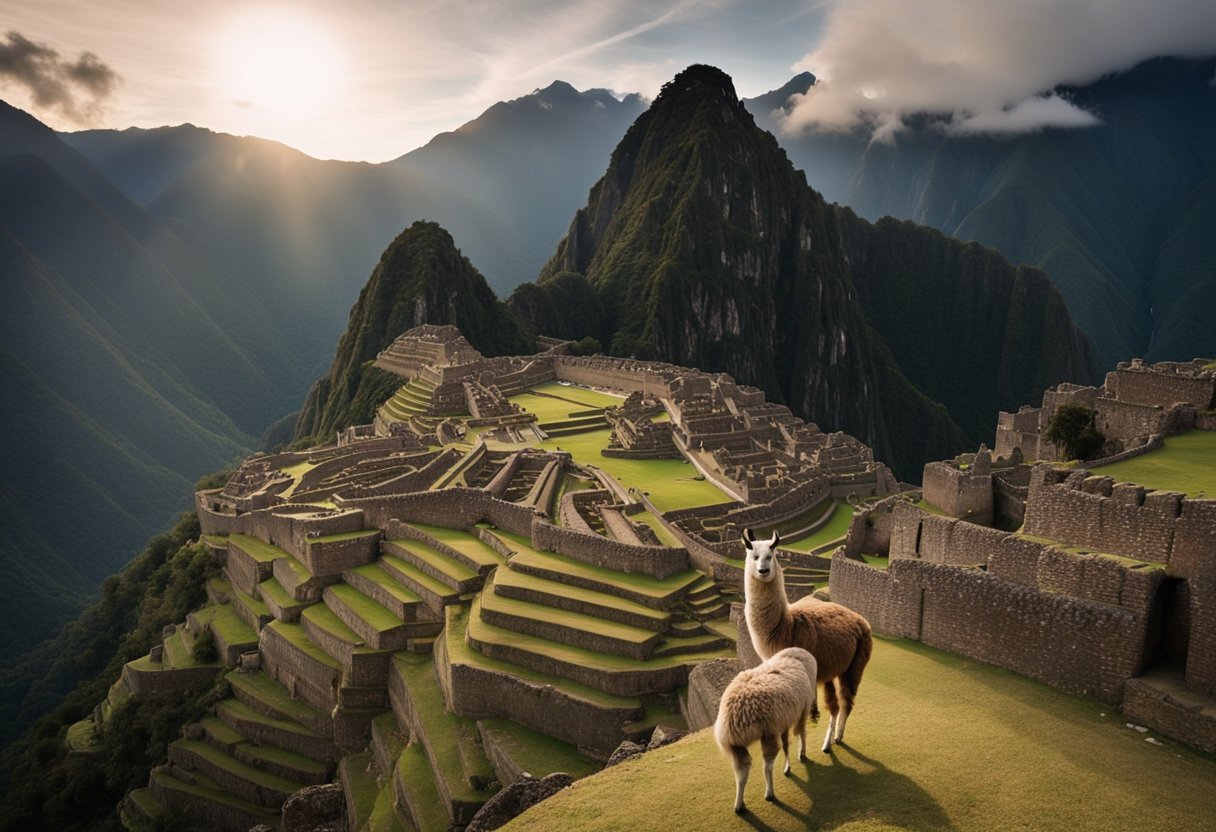Machu Picchu, the ancient Incan city perched high in the Peruvian Andes, has mystified historians and adventurers alike since its discovery over a century ago. Despite its age and lack of mortar, its 500 stone buildings still stand today, revealing the advanced engineering skills of the Inca civilization. The site, located about 50 miles from Cusco, is not only an architectural marvel but also an enigma wrapped in historical and geological puzzles.
Theories about Machu Picchu’s purpose abound. Some believe it was a royal estate for Incan Emperor Pachacuti, built in the 15th century and abandoned a century later during the Spanish conquest. Others think it served as a religious or ceremonial site. Recent archaeological findings, including an intricate water system, continue to shed light on the sophisticated urban planning and cultural practices of the Incas.
One fascinating aspect is its strategic location. Geologists have discovered that Machu Picchu lies at the intersection of multiple geological fault lines. This placement might have had spiritual significance for the Incas or was possibly chosen for practical reasons related to the stability of the structures. As experts continue to explore and decode its many secrets, Machu Picchu remains a testament to the ingenuity and mysteries of the ancient world.
Exploring the Origins of Machu Picchu

Machu Picchu, an iconic remnant of the Incan Empire, continues to puzzle archaeologists and historians. From its Incan roots to its historical discovery, here’s what we know about its fascinating beginnings.
Incan Empire Roots
Machu Picchu was constructed during the peak of the Incan Empire in the 15th century. Many scholars believe that it was built under the reign of Emperor Pachacuti. The city showcases the Incan expertise in architecture, agriculture, and astronomy. One of the remarkable elements is the precise stonework, achieved without mortar.
Located on a mountain ridge 50 miles from Cusco, the site was strategically placed at the convergence of geological faults. This positioning might have been intentional, allowing natural terracing and enhancing water management. Other Incan cities like Ollantaytambo and Pisac are similarly situated.
Historical Discovery
Machu Picchu remained unknown to the outside world until its “rediscovery” in 1911 by Hiram Bingham, a Yale historian. Guided by locals, Bingham brought global attention to the site. The lack of written records from the Incan civilization added to the mystery, leaving much of its purpose and origin open to interpretation.
Researchers today continue to explore the ruins, uncovering structures and artifacts buried under thick foliage. These findings help piece together historical timelines and cultural contexts. Excavations reveal not only royal and ceremonial spaces but also residential and agricultural areas, highlighting the city’s complexity and significance within Incan society.
Mysteries and Theories
Machu Picchu holds many secrets that continue to fascicate historians and archaeologists. From its purpose to its engineering feats, there are several theories surrounding this ancient site.

Purpose and Function
One prevalent theory suggests that Machu Picchu served as a royal estate for Inca emperor Pachacuti. It could have been a retreat or a celebration of his conquest. Others believe it was a religious site for the Virgins of the Sun, a holy group of women dedicated to the sun god.
Another idea posits that Machu Picchu was a trade hub, strategically placed to control commerce between different regions. Each theory demonstrates the site’s multifaceted potential, showing it as a place of significance in various ways.
Engineering Marvels
Machu Picchu’s construction baffles even modern engineers. Despite being built without mortar, its stone buildings have withstood earthquakes. This remarkable feat is partly due to the ashlar technique, where stones are cut to fit together so precisely that not even a knife blade can fit between them.
Archaeologists found that the city’s foundations were built on natural fault lines, providing structural integrity. Machu Picchu also features an advanced water delivery system, including over 100 channels and fountains that still function seamlessly, showcasing the engineering prowess of the Incas.
Astronomical Alignments
Astronomy played a significant role in Inca culture, and Machu Picchu is no exception. The site includes structures like the Intihuatana stone, believed to function as a sundial to mark astrological events.
Key buildings align with celestial bodies during solstices and equinoxes, helping the Incas track time and agricultural cycles. These alignments reveal not only their sophisticated understanding of astronomy but also its critical role in daily life and religious practices.
Combining these elements paints a complex picture of Machu Picchu, highlighting its importance as a cultural, engineering, and astronomical masterpiece.

